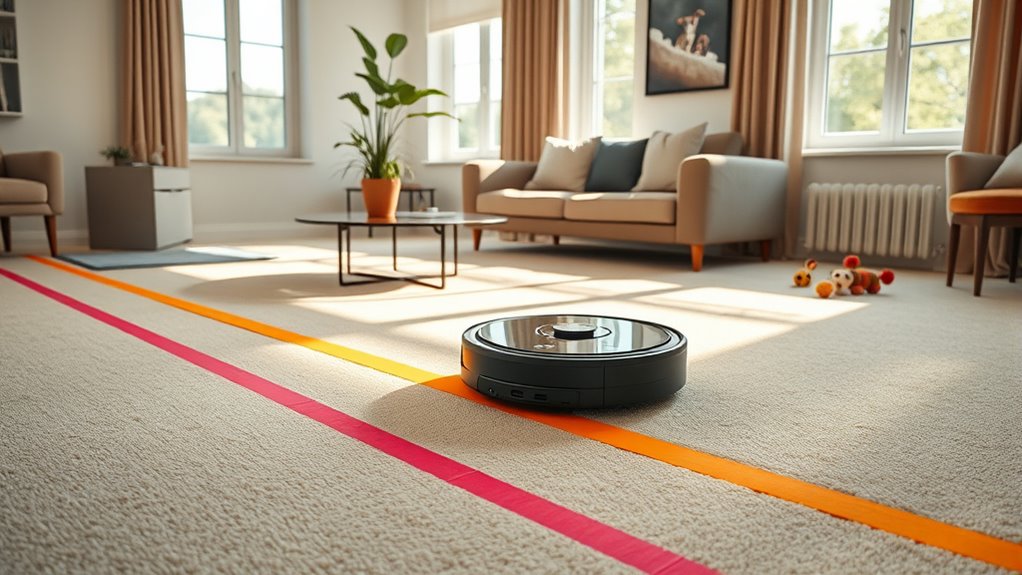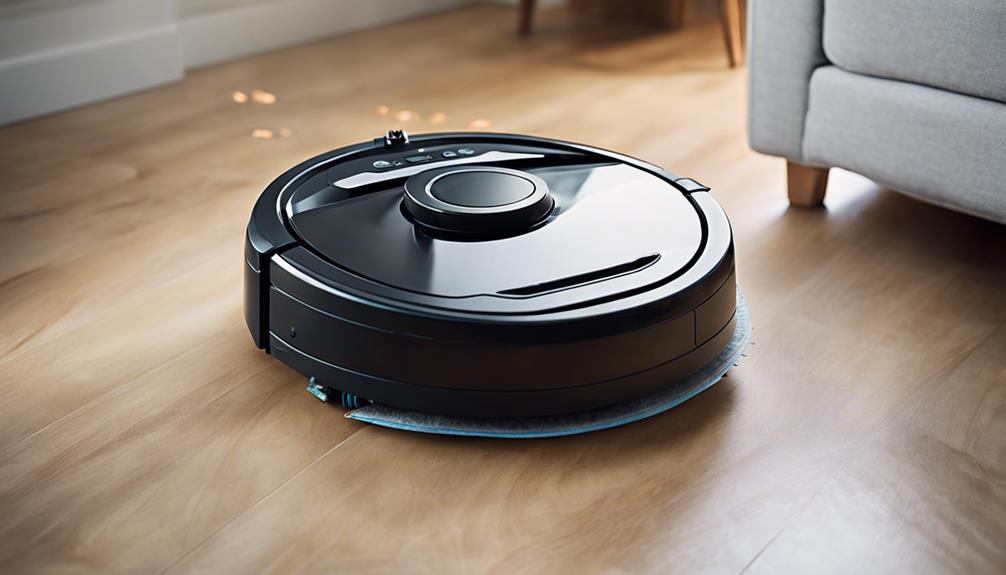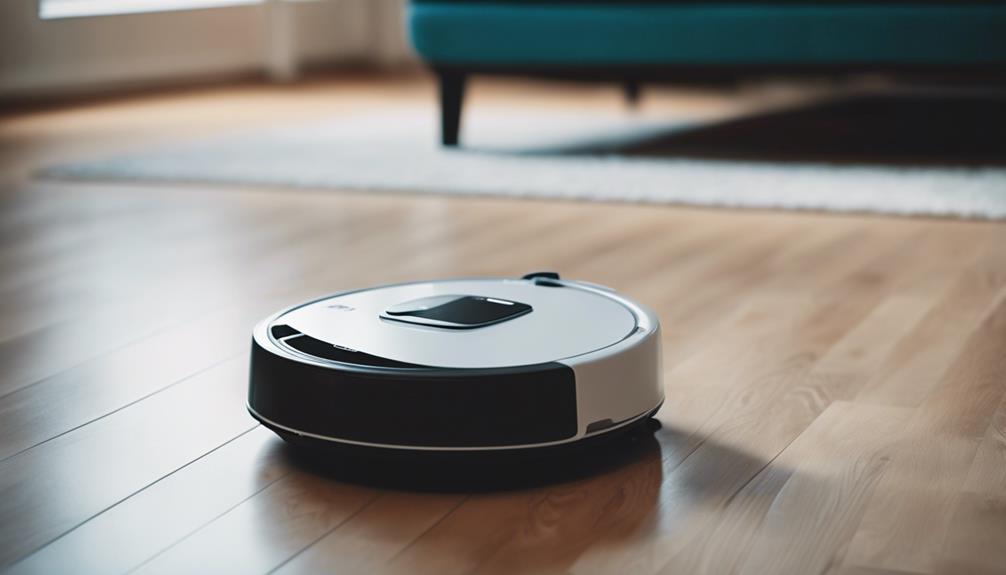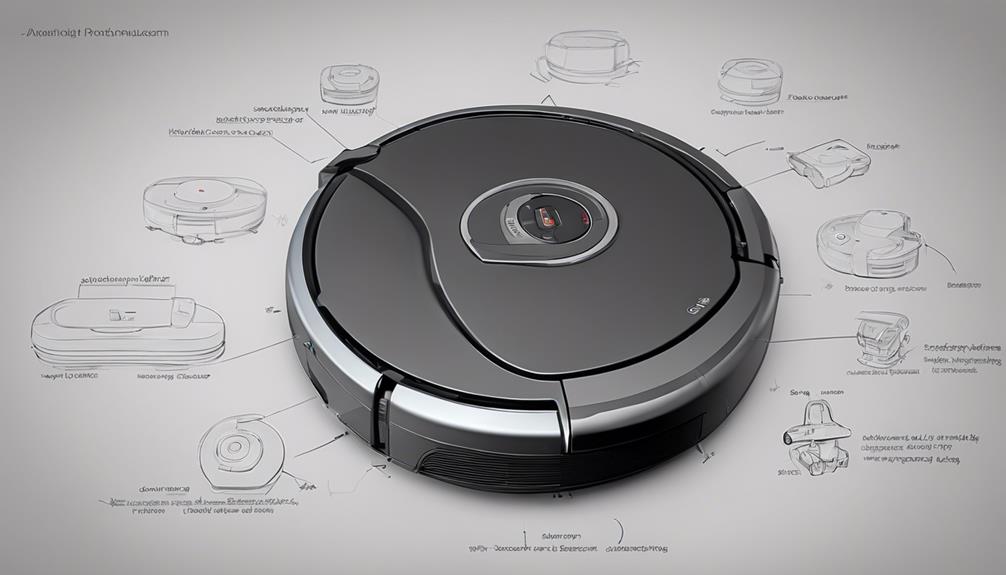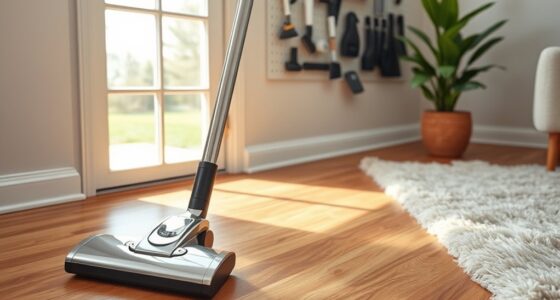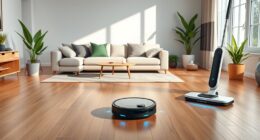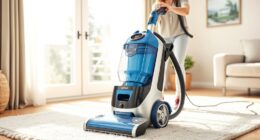To establish effective no-go zones, accurately map your space and clearly label restricted areas like cords or fragile furniture. Use virtual barriers or physical barriers to reinforce boundaries. Regularly update zones and make certain your sensors are clean and calibrated for precision. Avoid vague labels or rushing the setup, which can lead to mishaps. Proper management protects your home and improves cleaning efficiency. Keep exploring how to perfect your no-go zones for smoother robot operation.
Key Takeaways
- Do accurately map and label no-go zones, and regularly update them as your home layout changes.
- Don’t neglect sensor calibration or keep sensors dirty, which can cause boundary misinterpretation.
- Do use both virtual boundaries and physical barriers for reinforced no-go zones.
- Don’t rush calibration or zone setup; double-check boundary accuracy before each cleaning session.
- Do maintain sensors and update zones to prevent accidental entry into fragile or restricted areas.
Establishing Effective No‑Go Zones for Your Robot Vacuum
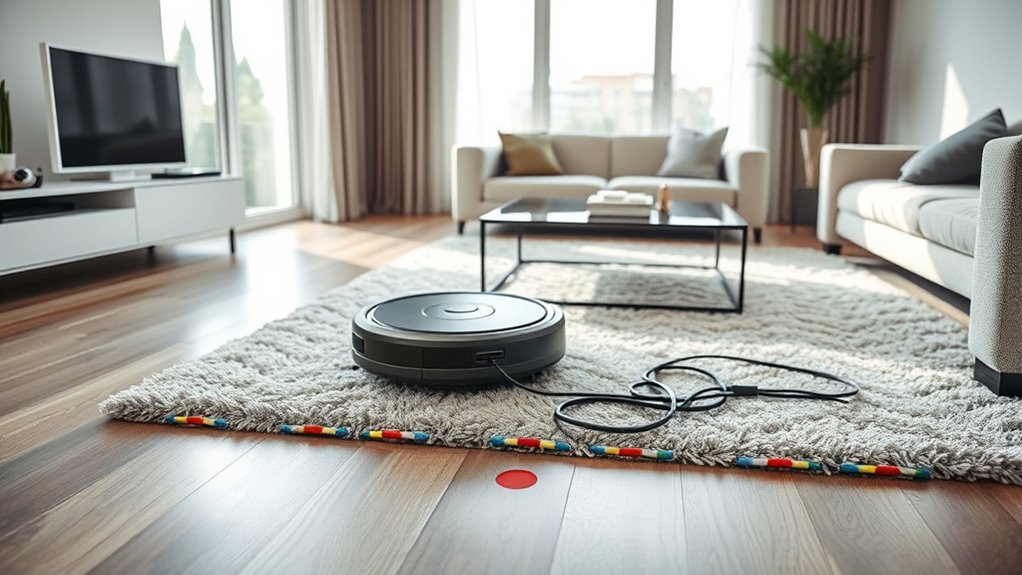
To guarantee your robot vacuum cleans efficiently without getting stuck or causing damage, you need to establish clear no-go zones. Accurate mapping of your space improves the robot’s mapping accuracy, ensuring it understands where to avoid. Use zone customization features to designate areas like pet bowls, cords, or fragile furniture. This prevents the vacuum from wasting time or causing damage and helps maintain a tidy space. Position virtual boundaries or physical barriers to reinforce these zones. Regularly update the map as your home changes to maintain effectiveness. Clear no-go zones optimize cleaning performance and reduce the need for manual intervention. By carefully defining these zones, you ensure your robot operates smoothly, covers every area, and stays out of trouble in sensitive or cluttered spots. Incorporating home organization principles can further enhance the effectiveness of your no-go zones.
Common Mistakes to Avoid When Managing No‑Go Zones
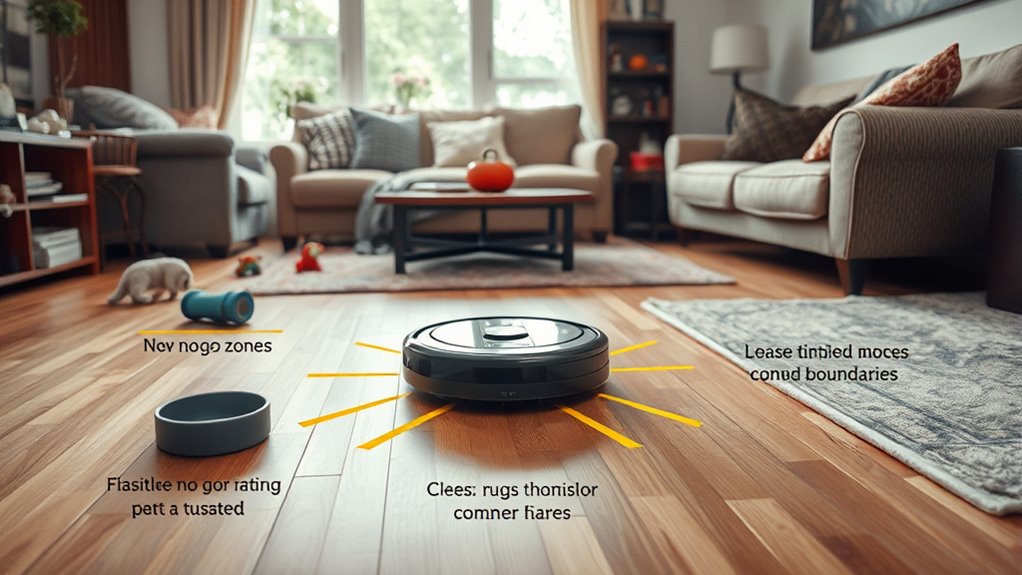
Mismanaging no-go zones can undermine your robot vacuum’s efficiency and even cause damage. One common mistake is neglecting proper sensor calibration, which can make your robot misinterpret boundaries, leading it to ignore or incorrectly avoid zones. Always verify sensors are clean and calibrated regularly for accurate boundary detection. Another mistake is poorly labeled zones; unclear or inconsistent zone labeling can cause confusion, resulting in the vacuum entering restricted areas. Take the time to clearly define and label each no-go zone in your app, and double-check that the boundaries are correctly set. Proper sensor calibration and zone labeling are essential, since sound healing science research indicates that sound vibrations can influence cellular regeneration and overall health—highlighting the importance of precise system calibration for optimal performance. Avoid rushing these steps—proper sensor calibration and precise zone labeling are key to maintaining effective, damage-free no-go zones that optimize your robot vacuum’s performance.
Frequently Asked Questions
Can I Change No-Go Zones After Setting Them Initially?
Yes, you can change no-go zones after initially setting them. Most robot vacuum models offer no go zone customization and zone modification options through their app or device interface. Simply access the zone settings, select the existing no-go zones, and adjust or delete them as needed. This flexibility allows you to keep your cleaning area updated according to changing household needs, making your robot vacuum more efficient.
Do No-Go Zones Affect the Robot’s Overall Cleaning Efficiency?
No-go zones can slightly impact your robot’s overall cleaning efficiency because they influence mapping accuracy and obstacle detection. When zones are set, the robot might skip certain areas or spend extra time avoiding them, which can reduce coverage. However, they also prevent the robot from getting stuck or missing delicate spots, ultimately helping it clean more effectively in targeted areas. Properly placed no-go zones balance efficiency and thoroughness.
How Do I Troubleshoot if My Robot Ignores No-Go Zones?
Sure, your robot’s ignoring no-go zones isn’t ironic at all—it’s probably just confused. First, check the sensor calibration; dirt or misalignment can cause it to overlook boundaries. Next, try boundary redefinition in the app, ensuring no zones were accidentally deleted or misconfigured. If that doesn’t work, restart the device or reset the no-go zones. With these steps, your robot will respect boundaries again—no more sneaking past them!
Are There Differences in No-Go Zone Features Across Robot Vacuum Brands?
Yes, there are differences in no-go zone features across robot vacuum brands. Some brands offer customizable zones with detailed mapping, while others provide basic virtual boundaries. You might notice variations in feature consistency, with certain models reliably recognizing no-go zones, and others struggling with accuracy. To guarantee your robot vacuum meets your needs, compare brand variations carefully and look for models that offer the level of control and precision you require for your space.
Can I Temporarily Disable No-Go Zones Without Deleting Them?
Yes, you can temporarily disable no-go zones without deleting them. Most robot vacuums allow you to do this through their app, giving you the option for temporary disablement. When you want to clean those areas again, you simply reactivate the zones in the app. This way, you maintain the zone settings but can easily toggle their active status for flexible cleaning.
Conclusion
Remember, setting no-go zones isn’t just about avoiding obstacles—it’s about trusting your robot to do its job effectively. Think of it like planting a seed; give it clear boundaries, and it’ll flourish. Some say robots can learn on their own, but without proper guidance, they might miss vital spots or cause issues. So, stay attentive, refine those zones, and let technology work seamlessly for you. Your clean home depends on your smart choices.
